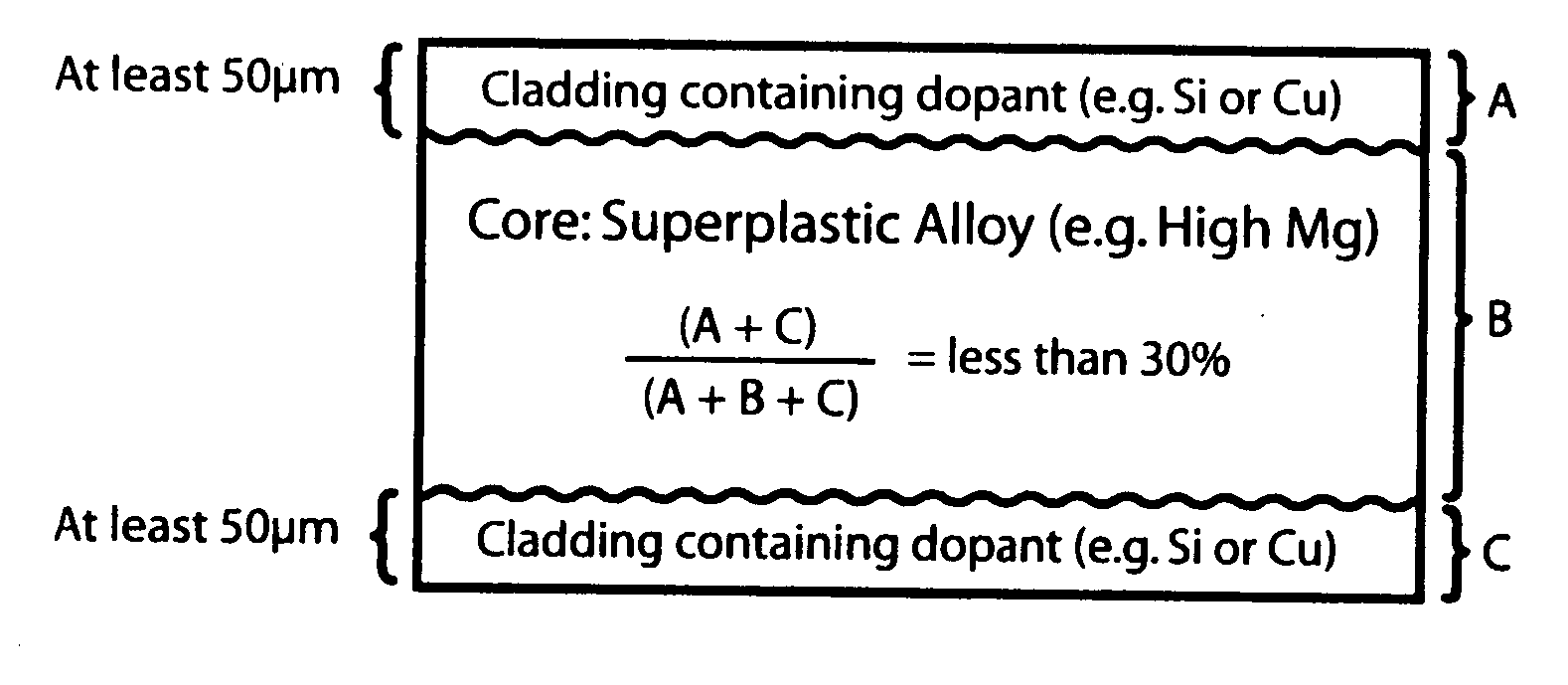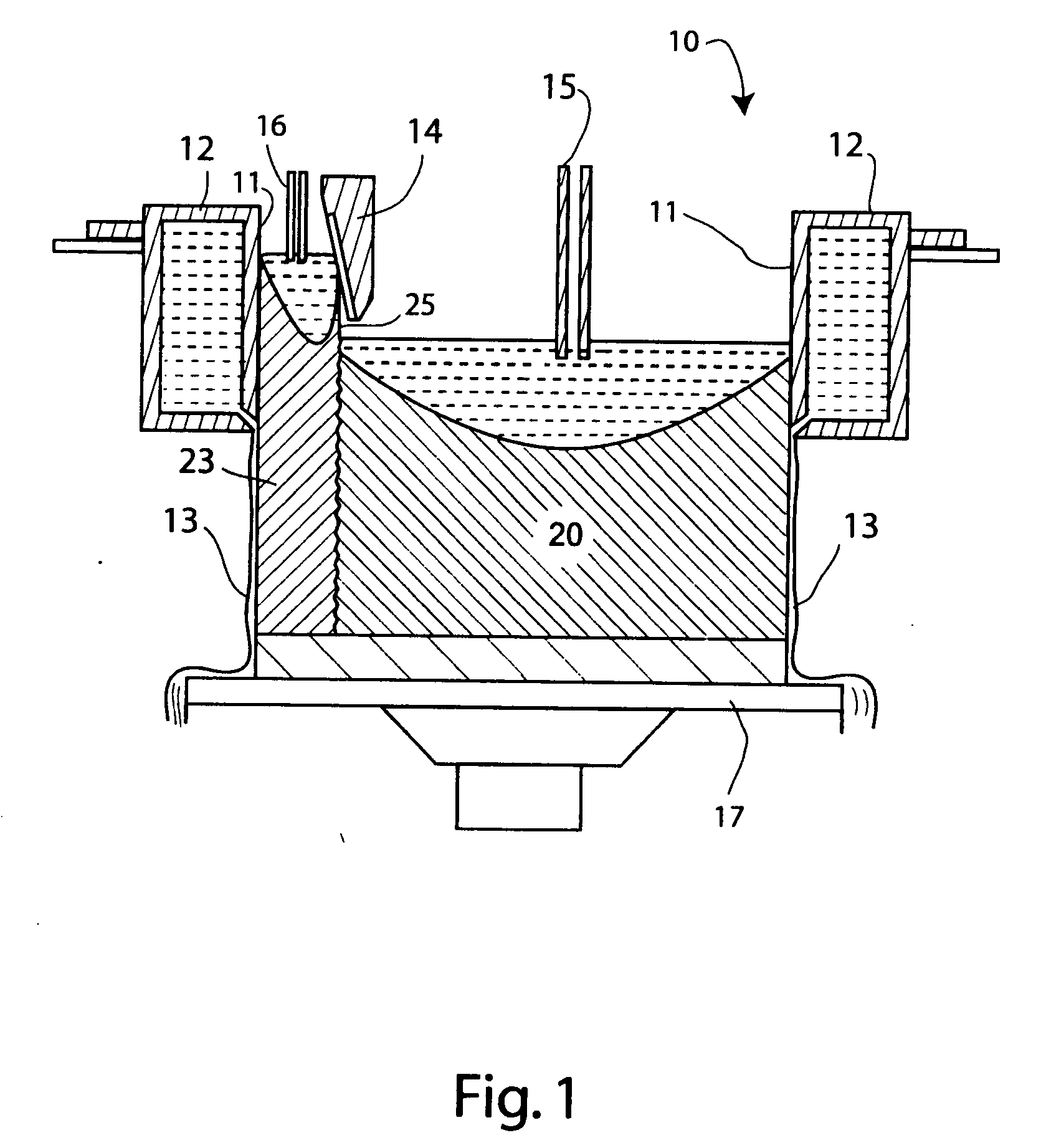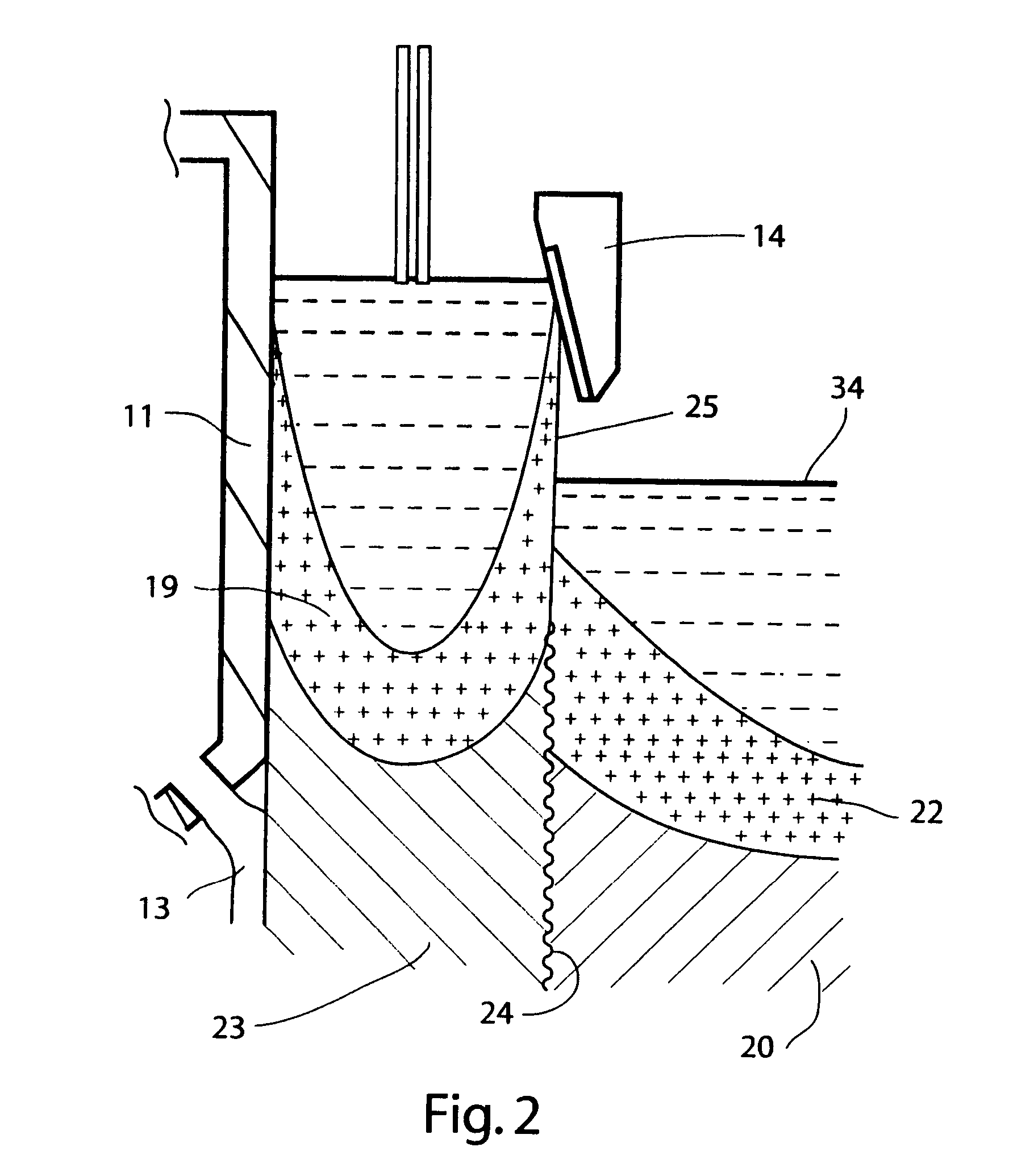Cladding superplastic alloys
a superplastic alloy and cladding technology, applied in the field of superplastic alloys, can solve the problems of deterioration, oxidation and/or surface deterioration of relevant mg-containing alloys, and the failure of materials, etc., to reduce the diffusion ability of elements, reduce the ability of elements to diffuse, and improve the effect of cladding quality
- Summary
- Abstract
- Description
- Claims
- Application Information
AI Technical Summary
Benefits of technology
Problems solved by technology
Method used
Image
Examples
experiment 1
[0057] This section describes the details of experiments and computer simulations performed to assess the high temperature properties of a clad material. Tensile tests and inter-diffusion experiments and simulations were performed. The material for the mechanical testing was a dilute AA3003 clad layer on an AA5083 core. The material was commercially cold rolled to a final gauge of 1.245 mm and additional specimens were obtained from an intermediate gauge at 1.9 mm. The specimens were deformed in tension at temperatures ranging from 450° C. to 525° C. At all temperatures, the samples from both thicknesses showed elongations of more than 300%. The greatest elongations were observed at 500° C.
[0058] The diffusion studies were performed to assess the feasibility of using Si or Cu to inhibit the diffusion of Mg through the clad layer to the surface. As already noted, the Si may slow Mg diffusion by the formation of Mg2Si, while Cu may encourage the formation of Al2CuMg and Al6CuMg4. The...
experiment 2
[0105] This Experiment report describes the results of diffusion simulations performed using the DICTRA software package to assess the minimum thickness of the clad layer required to inhibit the formation of MgO for a particular core / cladding alloy combination during superplastic forming conditions.
Simulation Conditions
[0106] Two clad packages are considered for this study: the first comprises a pure aluminum clad layer with a core of 4.8% Mg. The second specifies a clad layer of Al-0.6% Si and the core containing the same binary alloy of Al-4.8% Mg. These are suitable model alloys approximating the Novelis clad packages containing an AA5083 core with the dilute 3003 clad or a modified 3xxx alloy containing 0.6% Si, respectively. Excluding all other alloying additions for these simulations is reasonable since the primary mechanism to inhibit the diffusion of Mg is the excess of Si. Furthermore, it is assumed that the other alloying additions of Mn, Fe and Cr are primarily ‘trappe...
experiment 3
[0113] This section describes experiments performed to assess the maximum thickness of a non-superplastic clad layer on a superplastic core which still yields high elongations. The results suggest that the maximum allowable clad fraction is less than 30% (total cladding thickness) for the particular core / cladding alloy combination investigated.
Introduction
[0114] Previous studies on the use of clad products for superplastic forming have suggested that the allowable content of non-superplastic layers may be rather large and in excess of 50% of the total composition of the composite. Experiments were performed to assess the validity of those suggestions.
Experimental Procedures
[0115] Two alloys were examined in this study, namely a variant of AA5083 and a dilute AA 3003 alloy with excess Si. These two alloys were cast as book-moulds. Several book-moulds were cast of each to allow sufficient material to be used for producing a clad package by roll-bonding and additionally to proces...
PUM
| Property | Measurement | Unit |
|---|---|---|
| Thickness | aaaaa | aaaaa |
| Thickness | aaaaa | aaaaa |
| Thickness | aaaaa | aaaaa |
Abstract
Description
Claims
Application Information
 Login to View More
Login to View More - R&D
- Intellectual Property
- Life Sciences
- Materials
- Tech Scout
- Unparalleled Data Quality
- Higher Quality Content
- 60% Fewer Hallucinations
Browse by: Latest US Patents, China's latest patents, Technical Efficacy Thesaurus, Application Domain, Technology Topic, Popular Technical Reports.
© 2025 PatSnap. All rights reserved.Legal|Privacy policy|Modern Slavery Act Transparency Statement|Sitemap|About US| Contact US: help@patsnap.com



